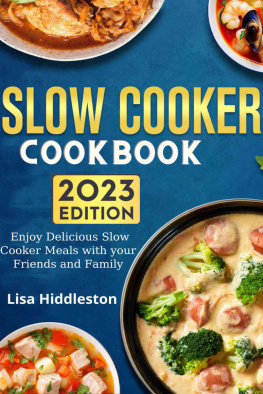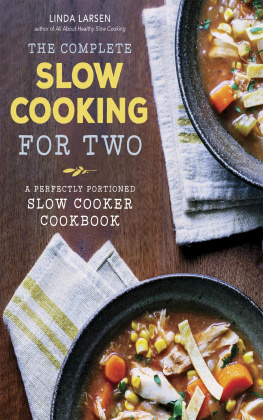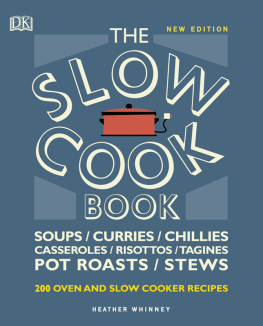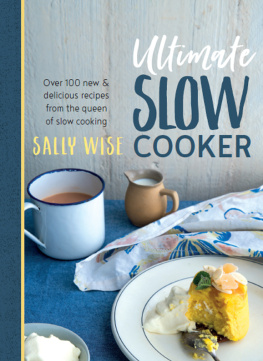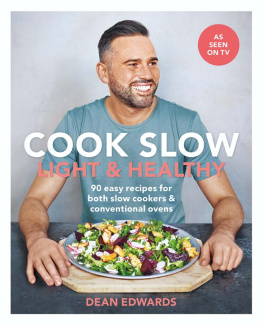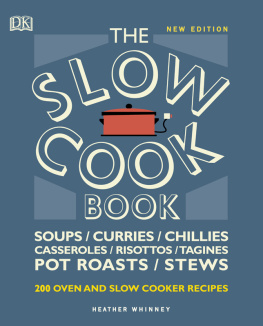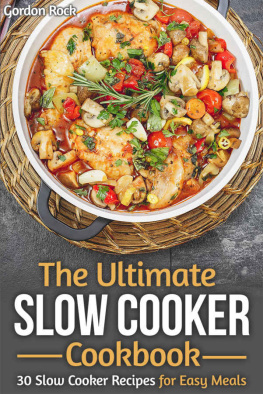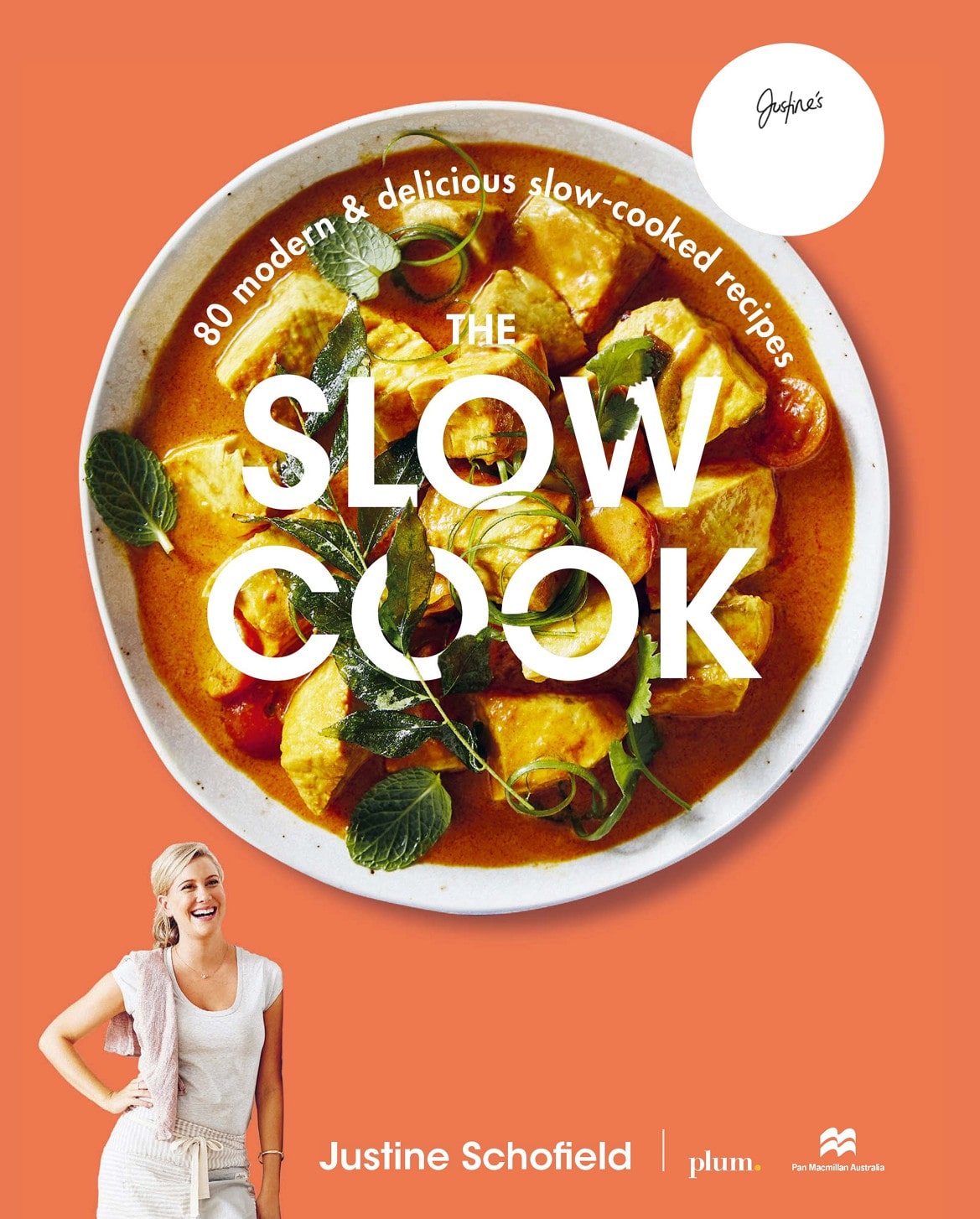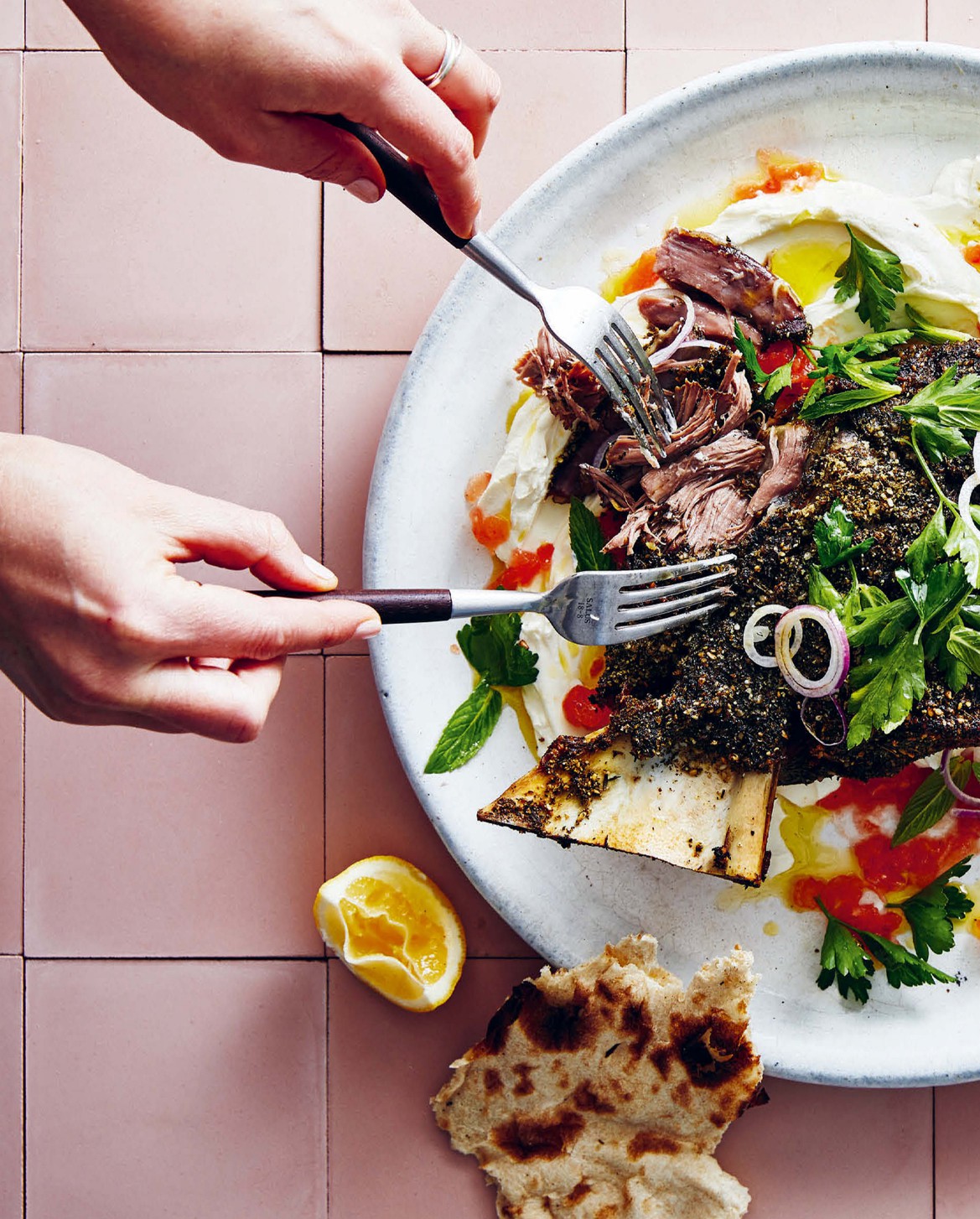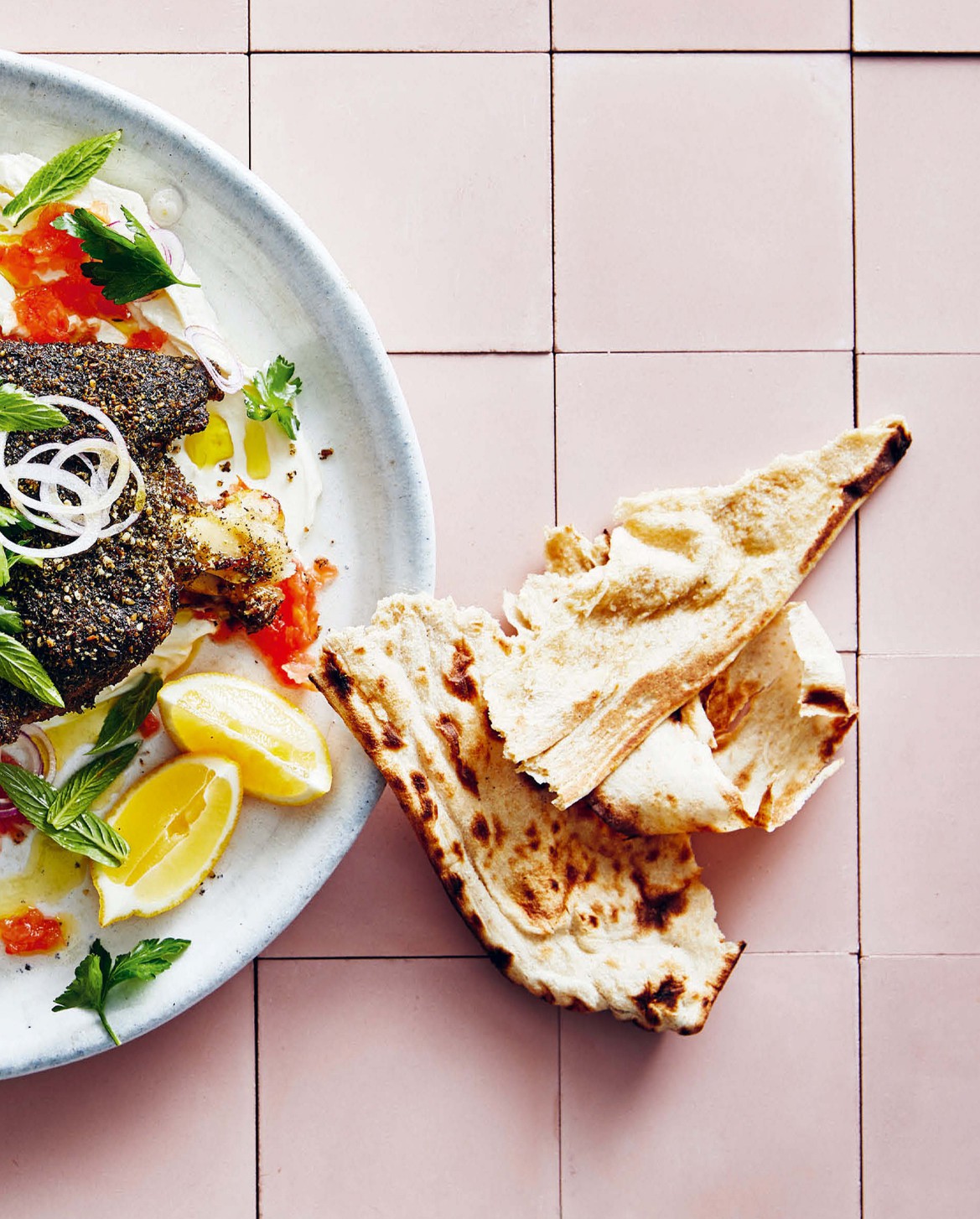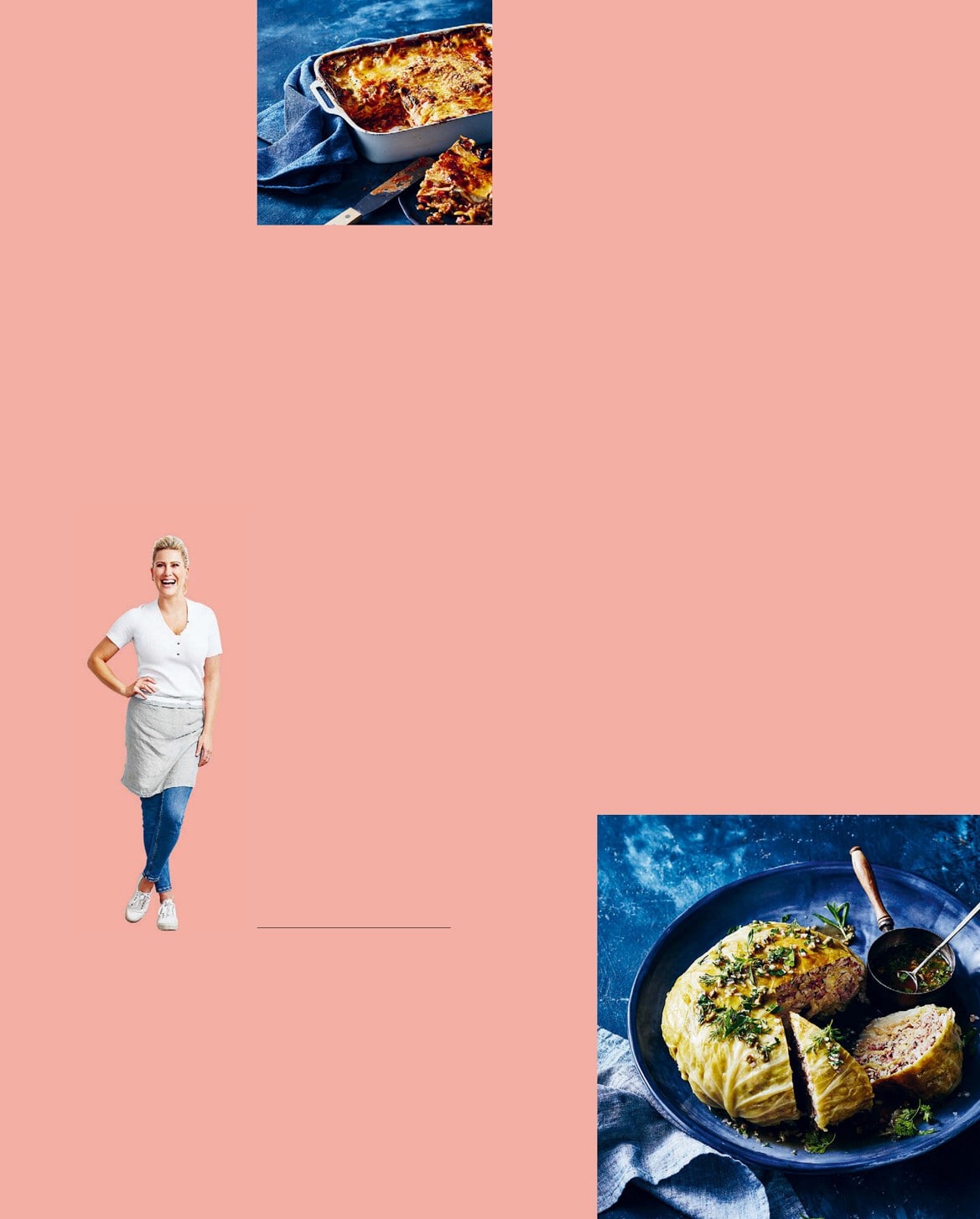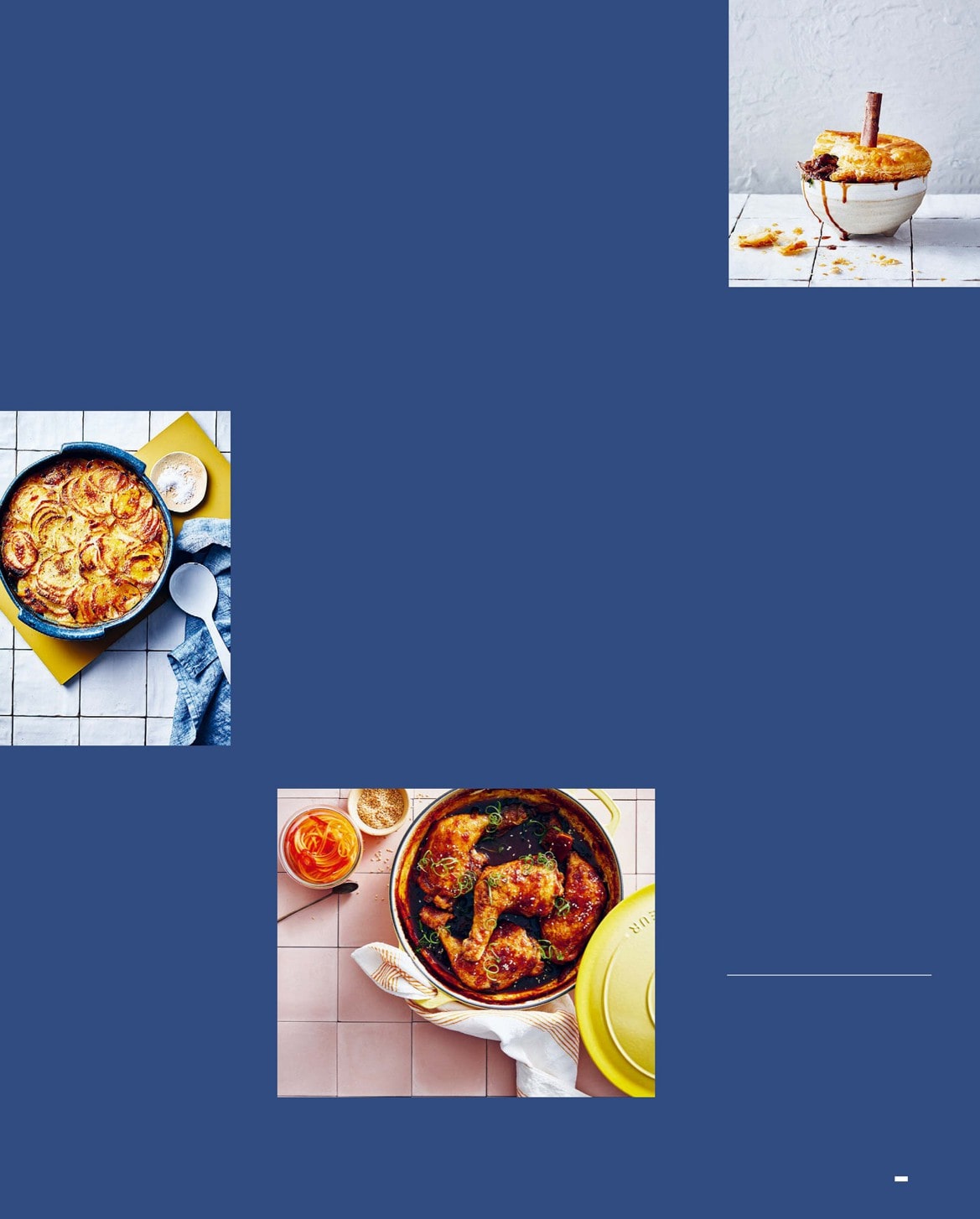Justine Scho eld
SLOW
COOK
THE m o d e r n & d e l i c i o u s s l o w - c o o k e d r e c i p e s Justine Scho eld
SLOW
COOK
THE m o d e r n & d e l i c i o u s s l o w - c o o k e d r e c i p e s A L L R E C I P E S F E A T U R E STOVET OP OVEN SLOW-CO OKER INSTRUCTIO NS
HELPFUL TIPS & TRICKS When it comes to slow cooking, if there is one piece of advice I really want to emphasise, its to plan ahead. Believe me, its worth it and the benets are two-fold. First, you get to enjoy the food with your family and friends as opposed to being stuck in the kitchen. And second, if you cook your stews, curries and ragus a day or two ahead of time they will taste even better. Theyll also be lower in fat. Cooking fattier cuts like pork belly, oxtail, lamb shoulder, neck or ribs then chilling them overnight in their cooking liquid allows the fat to rise to the surface and solidify. When you want to reheat and serve, simply scrape o the fat and youre left with the most glorious (and less oily) result.

WELCOME For me, cooking and comfort have always been linked. Theres nothing more therapeutic than a pot of delicious food gently bubbling away on a low heat for a few hours on a wintry Sunday afternoon. I adore it so much it felt only natural that my next book would be a compilation of all my favourite slow-cooked dishes. My last book was all about embracing mid-week cooking and showing you how to stock your fridge, freezer and pantry for super-speedy weeknight dinners. Now, I m continuing with the convenience factor, but slowing things right down and indulging in the joys of preparing simple, hearty, sustaining meals fr om around the world with a healthy dose of family favourites. The ritual of slow cooking is at the heart of how I fell in love with food, with most of my repertoire stemming from my French roots. My mumma Franoise and my grandmother Mm instilled in me the art of cooking home-style dishes that are steeped in tradition and its this culinary legacy that Im always eager to share with you. A lot of French dishes are based on the fundamentals of slow cooking: braising, stewing, poaching and roasting. Think beef bourguignon (a red wine beef stew, see page ), or a vibrant ratatouille. Mmmm, mouth-watering Its no wonder Im so passionate about this style of cooking. Slow cooking also forms the basis for many other cultures cuisines. In this book youll nd some of my most-loved slow-cooked dishes from Morocco to Italy, Japan across to America. These recipes, even if theyre new to you, will give you the warm, fuzzy feeling of coming home.
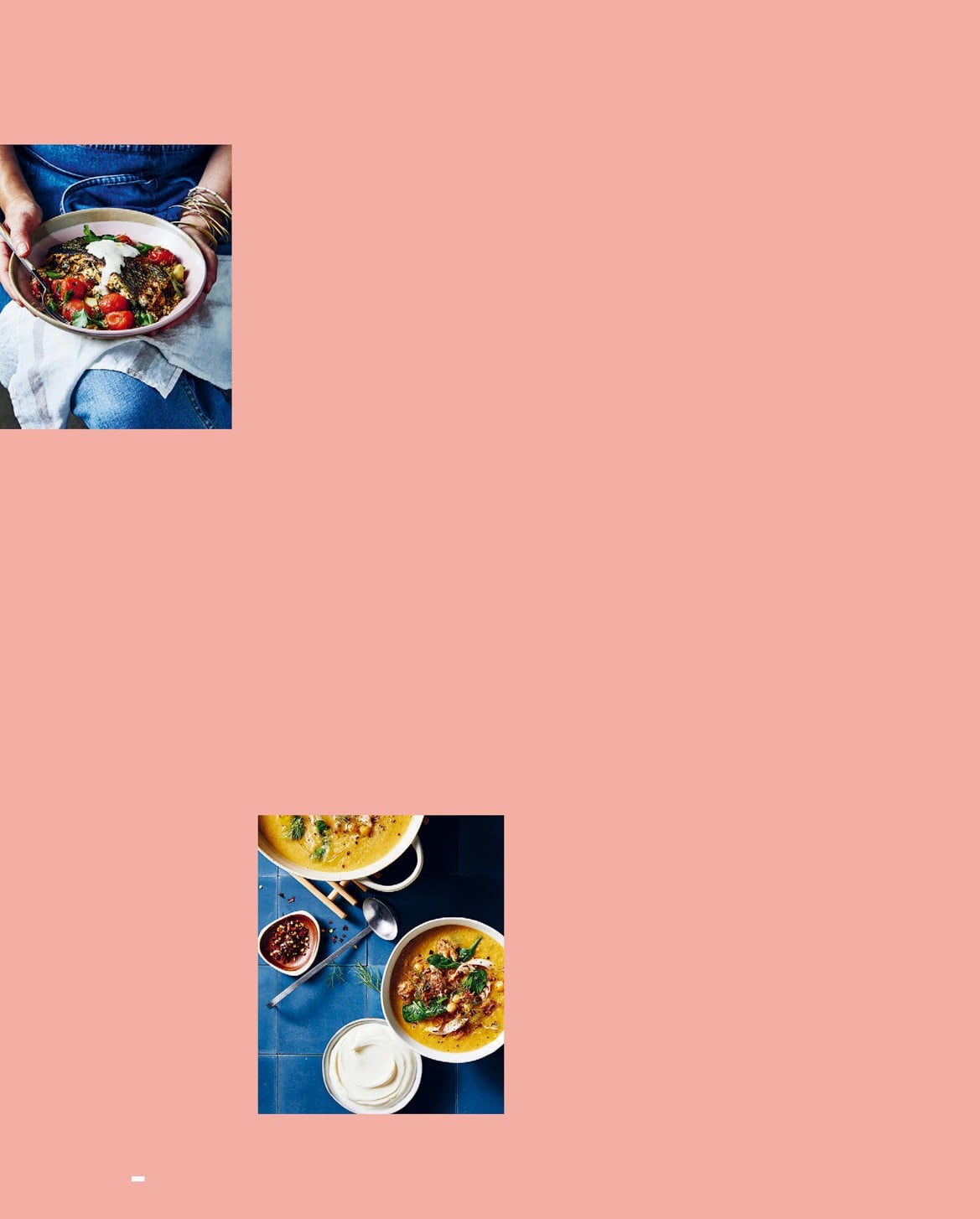
WELCOME There is much to be said about the convenience of cooking hearty, wholesome re cipes like these. They may take time to cook, but that doesnt necessarily mean they are dicult or time consuming to prepare. Ive designed this book so that you can control how much attention you give each recipe, by including both conventional and slow-cooker instructions. This helps make preparing meals easy, wit h maximum reward for minimal eort. The true appeal of slow cooking is the one-pot concept, which means not only less washing up but also big-batch cooking and freezer-friendly meals. Most of these recipes can be easily doubled so there will always be enough for leftovers to store in airtight containers in the freezer for up to three months. Y ou can choose to cook these r ecipes the conventional way in a traditional vessel like a heavy-based casserole dish, cast-iron pot, ovenproof saut pan or even a baking dish or set and forget, leaving the dish to cook completely unattended in that much-loved, clever kitchen appliance, the slow cooker . The ease of switching on a slow cooker just before you leave for work in the morning is so gratifying, knowing you will come home to a beautiful meal.
THIS PAGE TOP Vegetable lasagne, page ). I also encourage you to embrace and explore cooking with dried legumes and pulses like chickpeas, lentils and kidney beans. Not only are they good for you, theyre economical and ideal to bulk out a dish for big-batch cooking.
SLOW-C OOKING FUND AMENT ALS There are a few general fundamentals Id like to spotlight when it comes to slow cooking. To maximise avour, sear your meat and vegetables. Most of my recipes include this step as it always gives you a superior result. I cant stress this enough. 2. Choose the right cut of meat for your dish. Leaner cuts like llets and loin are not ideal for slow cooking as they dry out too quickly and become chewy. Using meat on the bone gives you a more succulent and avourful result. W hen cooking seafood, choose sh and shellsh that wont fall apart too much oily salmon or meaty blue-eye trevalla or swordsh are good; however, the real champions when it comes to low and slow cooking are squid and octopus, which become meltingly tender. Some must-try recipes in the book are my stued squid (see page
WELCOME HELPFUL TIPS & TRICKS When it comes to slow cooking, if there is one piece of advice I really want to give you, its to plan ahead. Believe me, its worth it and the benets are two-fold. First, you get to enjoy the food with your family and friends as opposed to being stuck in the kitchen. And second, if you cook your stews, curries and ragus a day or two ahead of time they will taste even better. Theyll also be lower in fat. Cooking fattier cuts such as pork belly, oxtail, lamb shoulder, neck or ribs then chilling them overnight in their cooking liquid allows the fat to rise to the surface and solidify. When you want to reheat and serve, simply scrape o the fat and youre left with the most glorious (and less oily) result. THIS PAGE TOP Lamb shank pies, page


